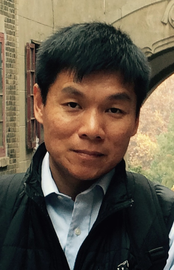
Research Goal
The ultimate goal of the Ye research group is to understand how cells deal with misfolded proteins in the endoplasmic reticulum (ER), the major site of protein biosynthesis in cells, and other cellular compartments. Protein quality control is an extremely important cellular function required for the fitness of a multicellular organism. Accordingly, defects in protein quality control are associated with increased protein misfolding, a trait closely linked to human disease conditions. The lab wishes to use cell-free systems to understand how precisely the retrotranslocation machinery works. It also wants to understand the precise mechanisms that permit many ER-associated degradation (ERAD) machinery proteins, which are involved in quality control, such as p97 and Bag6, to act in a concerted manner to eliminate misfolded proteins. ?
Current Research
Polypeptides entering the ER may frequently encounter folding problems, resulting in aggregation-prone misfolded proteins. To preserve ER homeostasis, eukaryotes have evolved a conserved quality control pathway termed ERAD or retrotranslocation, which eliminates misfolded or damaged proteins of the ER by exporting them into the cytoplasm for degradation by the ubiquitin proteasome system. Defects in ERAD result in the accumulation of misfolded proteins, thereby causing ER stress. Recent studies have implicated ER stress in the pathogenesis of many human diseases, including type 2 diabetes and several types of neurodegenerative diseases. The ERAD system is also hijacked by certain viruses to destroy folded cellular proteins required for antiviral defense. This allows these viruses to evade host immune surveillance.
Although many factors involved in ERAD have been identified by recent genetic and biochemical studies, the molecular mechanisms underlying the ERAD system are not well defined. Particularly, it is not well understood how cells can distinguish misfolded polypeptides from those that are in the folding process. Moreover, it is also not known how misfolded substrates are targeted to the site of translocation in the ER membrane and subsequently transferred across the membrane. The identity of the protein-conducting channel for retrotranslocation is also unclear. Finally, for many identified ERAD factors, almost nothing is known about their precise function other than their genetic requirement for ERAD.
The Ye research group previously identified a cytosolic ATPase called p97, which provides the driving force to move ERAD substrates into the cytosol during retrotranslocation. The group also discovered a membrane protein complex that interacts with p97 to mediate the transport of substrates into the cytosol. The central component of this complex is Derlin-1, a conserved multispanning membrane protein postulated to be part of a protein channel. The research group is currently investigating the mechanisms by which p97 operates during protein retrotranslocation. It also wishes to define the roles of many p97-associated factors in substrate handoff from p97 to the proteasome. In this regard, the current focus of the Ye research group is to dissect the molecular interplays between a chaperone holdase complex consisting of Bag6, Ubl4A, and Trc35 and a p97-associated deubiquitinating enzyme. The group is also studying how deubiquitinating enzymes are regulated in the context of ERAD as well as certain signaling transduction pathways. Another effort is to identify endogenous ERAD substrates that may mediate critical cellular functions.
Applying the Ye group’s research
Many proteins involved in the ERAD are now being considered as potential drug targets for treatment of cancer and neurodegenerative diseases. The group envisions that a thorough characterization of the system may allow it to design small molecule inhibitors that can either enhance or disrupt the ERAD system. These molecules may be used to treat human diseases.
Ye group’s statement regarding further study needs
In addition to studying the mechanism of the ERAD system, the Ye research group also needs to conduct more animal-based studies to better evaluate the physiological roles of the ERAD system. It also needs to develop more in vitro assays for small molecule inhibitor screens.
Source: http://www.niddk.nih.gov/about-niddk/staff-directory/intramural/yihong-ye/Pages/research-summary.aspx